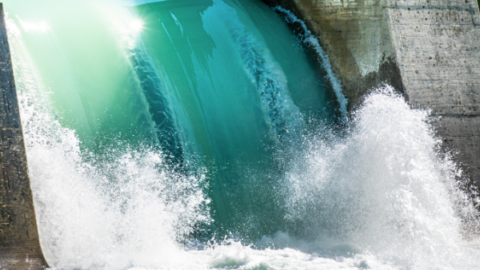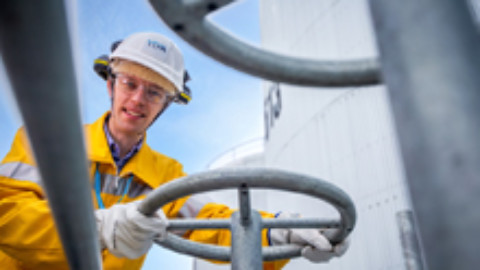By Johan Cilliers, Valve Product Manager, Amiad Australia
In our environmentally sensitive world, the need for air release from liquid transfer systems to improve system efficiency is gaining momentum.
The National Energy Savings Initiative recently published a report based on an analysis by ClimateWorks Australia which estimates that about $3.2 billion can be saved annually on energy costs by reducing baseline energy consumption by only 11 per cent.
A major part of the national energy consumption goes into operating drinking water and wastewater utilities, where every volume of water passed through a system, represents a significant energy cost and is often the second to third largest expense that a water utility must cover.
Although the potential for considerable energy conservation by using air valves was claimed many years ago, only limited research has been conducted on this matter to date.
Air valves are sometimes labeled a form of black art, but once the basic air valve types and their primary functions are understood, it is surprisingly simple.

Even during Roman times the need to purge air from primitive water transfer systems was acknowledged, as illustrated by these ancient “air valves” made from hollowed-out rocks.
A “kinetic” or “large orifice” air valve has a single, large orifice with a single large float as its only moving part, and has two primary functions: To allow the discharge of relatively large volumes of air from the pipeline during pipe filling and then closing as water enters the valve, followed by its equally important “vacuum breaking” function to introduce air back into the pipeline during pipe draining or in the event of pipe surges.
The “kinetic” or “large orifice” air valve component has one limitation in that it cannot release any air once it has closed when the system has been primed and pressurized, due to the (upwards) hydraulic force applied to the area of the relatively large orifice [Fh=P x A], which is significantly greater than the (downwards) gravity force of the float [Fg=m x g]. This means that the float remains in its closed position, regardless of whether the valve accumulates entrained air once the pipeline is in pressurized system operation.
An “automatic” or “small orifice” air valve has a single small orifice to “automatically” release smaller volumes of air, where the orifice is small enough to create a hydraulic force less than the weight of the float, allowing it to open when entrained air accumulates inside the body even while the system is primed and pressurized.
When we combine one large “kinetic” and one small “automatic” orifice component into one unit, the resulting “Combination” or “double orifice” air valve can then perform both the small and large orifice functions. The resulting combination air valve is the most commonly used air valve type in operation across the world. (Note: the term “double acting” is often used to indicate double orifice, but is ambiguous and not recommended).
Over the years several other features and functions have been developed and added to different air valve models and options available today include special “air gap separated” air valves, designed to handle liquids containing solids such as wastewater or other environmentally sensitive fluids such as in hyper-saline dewatering applications. Other sub-types or add-on options include one-way bias devices to allow air in- or air outflow only, or non-slam / slow release air options to reduce local closing slam associated with (too) high air discharge velocities by restricting the air discharge rates with a third orifice of intermediate size.
Most of the anti-slam air valve types can also be applied for system surge mitigation, effectively slowing down the water velocity in the system when & where appropriate, while the latest and more advanced “dynamic” air valve type operates on a different technology to most other combination air valve types, allowing high air discharge rates, but avoiding air valve closing slam by closing slowly.
Regardless of all these types and options, the “Combined” kinetic and automatic functions remain the primary purpose for the majority of air valves installed on pipelines.
There are several common sources of entrained air in liquids (some more common than others), but in virtually every pipe system entrained air is released from solution and increases in volume as the system pressure decreases. As the pressure decreases along the pipeline, every dis-entrained air bubble expands (ideal gas law : [PV = nRT]), to displace a larger volume of water resulting in increasing its buoyancy force [Fb= ρ x V x g], driving the larger bubbles towards the crown or high points along the pipeline. Air bubbles also flow along the crown of the pipe and can merge with similar bubbles into even larger pockets of air.
This natural tendency of air bubbles to rise vertically upwards, also causes air bubbles to rise against flow direction on downhill sloping pipe sections. At a “critical” flow velocity, the smaller air bubbles start to be dragged along the flow, but although a few attempts have been made by researchers to predict the critical flow velocity, most resulted in different results and formulas for various pipe diameters and pipe slopes.
One reason for the different results from the various “critical” flow velocity research projects, is that although smaller air bubbles may start to get drawn in the flow direction on a downhill sloping pipe above certain flow velocities, some of these smaller bubbles then merge into larger pockets which then again rises against the flow direction due to the increased buoyancy force of the larger pocket, and again accumulate at local peaks along the pipeline.
- Downslope entrained air flow
- HGL with and without air trapped
- Pump and system curves with and without air trapped
Recent research projects indicated that the headloss at the location of each air pocket is typically equal to the vertical height (“H”) of such air pocket.
With many such air pockets potentially trapped along a pipeline and almost certainly at any local peaks relative to the HGL (Hydraulic Grade Line), each such air pocket restricts the liquid flow passage, increasing the flow velocity and associated friction loss below the air pocket for the “length” of the air pocket, somewhat like a semi-closed valve at each such location.
The red HGL on this illustration assumes only one such trapped air pocket, and indicates the additional losses the pump needs to overcome due to the trapped air, compared to the designed (ideal) HGL in blue, which assumes no air pockets.
Centrifugal pumps come in many different models, types and sizes, with different characteristic pump curves, some with relatively flat curves, and others steeper.
Some of these curves are stable and some are unstable (as explained in previous pump magazine articles), with potentially more than one possible operating duty.
Submersible centrifugal pumps typically have relatively low operating efficiencies, while end-suction centrifugal pumps with suction pipe connections are often more efficient.
There are several reasons to select a pump to operate at best efficiency point (BEP), not only to limit pump wear, but also to deliver the highest flow rate at the lowest power requirement.
Every system has different hydraulic characteristics and similarly every pump has a particular characteristic pump curve. But let’s consider the additional pump pressure required in the HGL comparison above. From the pump and system curve point of view, we see that the pump duty point moves back up the pump curve when air is trapped in the pipe, not only resulting in increased pump duty pressure and reduced flow rate delivered, but the pump efficiency has also decreased.

The pump shaft power requirement can be calculated, where the power required in the illustration above increases by a considerable 6.5 per cent.
In the example above the pump curve is stable and relatively flat, and assumes only a single trapped air pocket, hence in many cases the increase in pumping power can vary considerably, as illustrated by the following case study.
Case Study
The following pump records are for a wastewater system which was performing well below its designed capacity. The system was investigated and since these symptoms are consistent with flow restrictions such as trapped air, the decision was made to replace some of the existing kinetic only air valves with combination type air valves, to enable automatic (small orifice) release of the entrained air while the system was operating.
The first 24 hour pump operation record (BEFORE) is of the system while originally fitted with five kinetic (large orifice only) air valves along the pumping main, showing relatively long pumping periods, and low flow rates.
During the second 24 hour operation record, two of the kinetic (only) air valve types were replaced with A.R.I. D025 air gap separated combination air valve types. An immediate system improvement not only caused the pump operating periods to decrease, but also resulted in the flow rate improving such that the flow rate reading literally went off the report scale.
On the third 24 hour operation record (AFTER), the report’s flow rate scale was re-adjusted to show the full extent of the new, efficient system operation.
The payback period for the two A.R.I. air gap separated combination air valves valued at around $1150.00 each is approximately 13 months, but this payback period could even be less considering that the pump life is also extended in terms of bearing and seal life, or cavitation free operation when operating near the pumps’ best efficiency point.


























